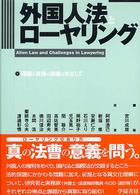Full Description
Pat Armstrong is a 2011 Fellow of The Royal Society of Canada.
One of the classic studies of Canadian sociology - now reissued with a new introduction by the authors - The Double Ghetto is a thought-provoking examination of women in the workforce and how their roles have both changed and yet stayed the same over the past four decades.
The Double Ghetto surveys the work women do at home and on the job to analyze why work in this country is still segregated by sex. As the authors note, although women now account for a majority of those graduating from post-secondary educational institutions and their labour force participation rate equals that of men, at the same time "women continue to do women's work at women's wages" and are disproportionately concentrated in the lowest paying occupations.
Why, despite all the gains of the past four decades, does segregation still persist? And why has progress, if anything, slowed since the mid-1990s, when the previous edition of this book was issued?
As well as being of vital interest to anyone interested in the status of women in the Canadian workforce, The Double Ghetto is also a standard text for courses in sociology, social work, and women's studies departments.
Contents
Introduction to the Wynford Edition ; 1. Introduction ; 2. Women's Work in the Labour Force ; Female Participation in the Labour Force ; The Economic Context ; Industrial Segregation ; Occupational Segregation ; Women's Wages ; Differences Among Women ; The Causation of Work ; Conditions and Relations of Work ; 3. Women's Work in the Home ; The Historical Context ; Housework ; Reproduction and Child Care ; Care of the Elderly and the Disabled ; Tension Management ; Sexual Relations ; 4. Biological Determinism ; Difficulties in Establishing Differences ; Female and Male ; Feminine and Masculine ; Biology and Work In The Home ; Biology and Work In The Labour Force ; 5. Idealism ; Idealist Analysis ; Problems With Idealist Analysis ; Symbolic Interactionism ; Post-Marxist Theories ; 6. Materialism ; The Materialist Approach ; Work at Home and In The Labour Force ; Employer Demands and Family Economic Needs ; Women's Work In The Home and Women's Consciousness ; Women's Work In The Labour Force and Women's Consciousness ; Early Learning ; 7. Conclusion ; References








